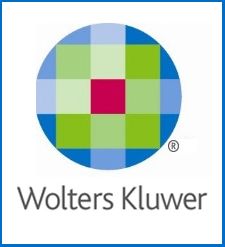MAS 610: Adapting to Regulatory Data Requirements

- Swati Kothari, Singapore-based Regulatory Reporting Product Manager at Wolters Kluwer’s Finance, Risk & Reporting business
- 23.01.2018 12:30 pm Regulation
The final revisions of the Monetary Authority of Singapore (MAS)’s Notice 610 reporting form for banks are imminent. But are banks prepared from a financial IT perspective? Here, writing for Financial IT, Swati Kothari, Singapore-based Regulatory Reporting Product Manager for Wolters Kluwer’s Finance, Risk & Reporting business, examines the main pain points likely to emerge.
Some four years in the making, the final revisions to the Monetary Authority of Singapore (MAS)’s Notice 610 reporting form for banks -- one of the most significant overhauls of the city-state’s regulatory regime in years -- are set to emerge in the first quarter of 2018. It’s therefore an opportune time to take stock of how prepared banks are for the change and the main pain points that are likely to emerge, particularly in terms of sourcing new types of data.
Given that the second consultation paper on the revisions was issued in early 2017 and that banks have actively been providing feedback to MAS, the final version of the notice may contain a few surprises. However, the main implications of the updated MAS 610 are already clear: banks will be called upon to provide more granular data than ever, and will need to engage in a six-month ‘parallel run’ in which they will report to MAS under both old and new MAS 610 requirements, to identify possible issues or distortions created by the new reporting regime.
The proposed Notice contains 16 main appendices versus just three currently, expanding from standard financial statements to cover metrics that may require input from a number of departments, particularly around counterparties, transactions and credit risk. It is also likely to require more levels of detail than standard reporting forms in many other jurisdictions.
The foreign bank dilemma
Even for local banks, this will involve a difficult adjustment period as they tweak their systems to perform the necessary calculations and capture new data points. Foreign banks however are likely to contend with additional complications resulting from their management structures.
Most foreign institutions are locked into systems that are developed and used at the global level, and that may not readily produce the new data points MAS requires. Altering those systems to support the updated MAS 610 will in many cases be an uphill struggle -- if it is possible at all. Change requests could meet with internal resistance or involve lengthy approval processes that do not align with MAS’s envisioned implementation timeframe.
From the longer-term strategic perspective, it’s clearly preferable for foreign banks to source the necessary data seamlessly from their upstream systems. But given timelines and the need for efficiency, a shorter-term approach may be required. One possible answer is capturing and storing certain static data points locally for Singapore regulatory reporting purposes.
This data store would need to be regularly updated, maintained and reviewed, but would ensure a foreign bank is not completely dependent on a global team with competing priorities to address any necessary changes.
Getting data under control
Assembling this data store is likely to require a degree of manual intervention. For foreign and local banks alike, whether data is generated manually or automatically, the MAS 610 transition will make data quality vital. The parallel run period will involve old and new reports being linked and compared (i.e. reconciliation analysis). This will require a certain baseline of control data that forms the foundation for parallel testing.
The potential for questionable data or anomalies complicating the process or attracting scrutiny makes it crucial that this control data is sourced and assessed in a stable, structured and thorough manner. Given the degree of change involved, we recommend that banks run existing and new reports in separate environments to minimize regression risk, and also stagger the delivery of reports rather than adopting a ‘big bang’ approach to providing regular feedback to MAS.
Automation solutions that are both robust and capable of incorporating and working with a broad and diverse number of data sets can make this process considerably easier, and help address the human resource constraints that will complicate the MAS 610 transition, particularly for smaller institutions.
The granularity of reporting will increase data volumes and potentially impact the performance of automated platforms. Banks will have to aggregate similar positions without impacting granular reporting, and should prepare to invest in upgrading operating systems, database servers and other technology infrastructure to handle the additional workload.
Singapore’s unique regulatory context and the highly specialized reporting requirements that will emerge with MAS 610 make it crucial to source reporting solutions based on deep subject matter expertise. As history demonstrates, reporting forms and their underlying business rules rarely remain static, it is also vital that these rules and reporting solutions are set up in a flexible, future-proof manner that enables them to absorb changes or updates.
Amid these changes, banks should also keep in mind that high-quality, more granular data has the potential to produce new business insights, particularly in terms of client behaviors or the risks they face -- a possible bit of good news as they grapple with the new era of reporting 2018 will usher in.
























